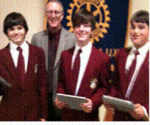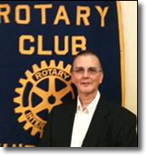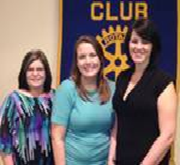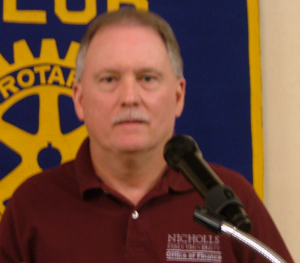Dr Donald B. Kearns, MD – Part 2 | Thibodaux Rotary Club
As part of the ongoing Thibodaux Rotary Club series, “Meet My Cousin,” past Rotary Club president, and present Sargent-At-Arms, Craig Stanga presents Dr Donald B. Kearns, MD.
Dr Donald B. Kearns, MD is Clinical Professor of Surgery, Head and Neck Surgery Surgeon in Chief, Rady Children’s Specialists of San Diego. Dr Kearns also happens to be Craig’s first cousin.
In part 2, Dr Kearns shares the wisdom of “Buckism.” And the role his father “Buck” Kearns played in shaping his career.
Part 1 – Meet My Cousin – Dr Donald B. Kearns
Part 2 – Meet My Cousin – Dr Donald B. Kearns
Part 3 – Meet My Cousin – Dr Donald B. Kearns
Part 4 – Meet My Cousin – Dr Donald B. Kearns
Part 5 – Meet My Cousin – Dr Donald B. Kearns
Part 6 – Meet My Cousin – Dr Donald B. Kearns
Dr Donald B. Kearns, MD – Part 1 | Thibodaux Rotary Club
As part of the ongoing Thibodaux Rotary Club series, “Meet My Cousin,” past Rotary Club president, and present Sargent-At-Arms, Craig Stanga presents Dr Donald B. Kearns, MD.
Dr Donald B. Kearns, MD is Clinical Professor of Surgery, Head and Neck Surgery Surgeon in Chief, Rady Children’s Specialists of San Diego. Dr Kearns also happens to be Craig’s first cousin.
In part 1, Craig shares some little known facts about Dr Kearns adolescent years.
Part 1 – Meet My Cousin – Dr Donald B. Kearns
Part 2 – Meet My Cousin – Dr Donald B. Kearns
Part 3 – Meet My Cousin – Dr Donald B. Kearns
Part 4 – Meet My Cousin – Dr Donald B. Kearns
Part 5 – Meet My Cousin – Dr Donald B. Kearns
Part 6 – Meet My Cousin – Dr Donald B. Kearns
The Amazing Future Of E.D. White Education
 David C. Boudreaux and Michelle Chiasson, E. D. White principal, with three 9th grade students: Cody LeBouef, Andre Broussard, and John Hue; discussed the iPad program for the 2012-2013 school year.
David C. Boudreaux and Michelle Chiasson, E. D. White principal, with three 9th grade students: Cody LeBouef, Andre Broussard, and John Hue; discussed the iPad program for the 2012-2013 school year.
In the 21st century, understanding and using technology will be an integral part of virtually every aspect of daily life. It is our school’s responsibility to prepare students for this future. Our holistic approach to education is based on the belief that a young person learns from his or her whole experience.
The classroom is the primary place where this preparation will occur; therefore, every classroom must be equipped with diverse technologies to support teaching and learning. Every teacher must be knowledgeable and skilled in the use of these technologies in daily instruction. When integrated into instruction, technology will support new strategies for teaching and learning by addressing diverse learning styles, accommodating individual learning rates, helping students accept responsibility for their learning, providing the means to communicate globally, and improving academic achievement. .
Why iPad?
In addition to the amazing educational apps that may be downloaded on the iPad, it has the ability to perform the following functions:
▪ Create, read, edit, and produce a full set of Microsoft Office compatible documents
▪ Create dramatic video presentations
▪ Perform wide-ranging internet-based research
▪ Utilize subject-specific apps to engage the students in the learning process
▪ Take class notes including PDF annotation
▪ Save and retrieve files through Cloud-based storage such as DropBox
▪ Create simple and complex graphic organizer
▪ Read e-books and textbooks
After years of research, four parent informational meetings, a parent survey, and discussion by the E. D. White Advisory Council, our school will implement an iPad program for the 2012-2013 school year. The iPad has the potential to greatly enhance the way teachers teach and the way students learn.
Students can take part in the school’s lease purchase plan through Apple or bring an iPad 2 from home. They are to be Wi-Fi only without 3G capability. All iPads will connect to the school’s network and internet filtering software.
Dr Tina Thomas, Biological Basis of Personality
February 28 Meeting
Speaker: Dr Tina Thomas,
Biological Basis of Personality
 Dr Thomas explained that understanding personality from the “inside-out” can help us to: be more successful in business; improve our relationships; and create more Peace, Passion & Power in our lives. A simple definition of personality is “how a person thinks, feels, and behaves, consistently over time” and this appears to be related to the high, medium, and low set points of 3 main chemicals in the brain that regulate thinking, feeling and behavior.
Dr Thomas explained that understanding personality from the “inside-out” can help us to: be more successful in business; improve our relationships; and create more Peace, Passion & Power in our lives. A simple definition of personality is “how a person thinks, feels, and behaves, consistently over time” and this appears to be related to the high, medium, and low set points of 3 main chemicals in the brain that regulate thinking, feeling and behavior.
Understanding the biological basis of personality helps us to understand ourselves more completely as well as those whom we deal with. Learning the 9 different “languages” of personality improves your ability to communicate and to create your dreams come true in a much more elegant way that you might be able to imagine!”
Chris Pena – Medical Needs of Soldiers in Southeast LA during the War of the Rebellion
 Mr. Pena was born in Houston, Texas and moved to Thibodaux with his family when he was eighteen. Chris is a Nicholls graduate, and earned degrees in theatre, history, and nursing. He holds a Master’s Degree in nursing form the University of Texas He taught nursing at Nicholls for a number of years and is a retired member of the faculty; now resides in Knoxville, Tennessee. Chris is an author, a playwright, an actor, a nurse and a Civil War expert.
Mr. Pena was born in Houston, Texas and moved to Thibodaux with his family when he was eighteen. Chris is a Nicholls graduate, and earned degrees in theatre, history, and nursing. He holds a Master’s Degree in nursing form the University of Texas He taught nursing at Nicholls for a number of years and is a retired member of the faculty; now resides in Knoxville, Tennessee. Chris is an author, a playwright, an actor, a nurse and a Civil War expert.
Mr. Pena talked about the medical problems during the War of the Rebellion: Five battles, fifteen skirmishes, and countless hit and run raids and affairs were staged in the Lafourche district during May 1862 to May 1865 – conservative casualties (killed, wounded, captured or missing) -3,500 – 3,700. Among the five battles only: 230 killed, 631 wounded. Confederates underreported their casualties – for example, Battle of Koch’s Plantation (July 13, 1863) (CSA) Gen. Tom Green listed only 3 killed, 30 wounded. Union reports listed 56 killed, 223 wounded. Chief cause of death was from hemorrhage, and infection from small arms. If wounded in the head, chest or abdomen almost always mortal. doctors used bromine.
Bromine was applied to the surface of the wound or injected into the wound while the patient was under general anesthesia) and iodine (disinfectant) as treatment for wound infections – the problem was that the treatment was started too late. Doctors believed that bacteria came as a result of infections. They didn’t believe that bacteria caused infections. Between 1821 and 1846 only 333 surgeries were performed in USA. Surgery was the last thing opted for because of the pain.
Marcella Bienvenu, NSU-Culinary
Marcella Bienvenu is a cookbook author and food writer who has been preparing Cajun and Creole dishes since the 1960s. She is currently a chef/instructor at the John Folse Culinary Institute at Nicholls State University.
She is the author of four cookbooks: Who’s Your Mama, Are You Catholic and Can You Make a Roux? (Book 1), Who’s Your Mama… ? (Book 2), Cajun Cooking for Beginners, and No Baloney On My Boat. She co-authored four cookbooks with renowned chef Emeril Lagasse. She also co-authored Eula Mae’s Cajun Kitchen with Eula Mae Dore, a longtime cook for the McIlhenny family on Avery Island, and Stir the Pot: The History of Cajun Cuisine, with Carl A. Bras-seaux and Ryan A. Brasseaux. With Judy Walker, food editor for The Times-Picayune, Ms. Bienvenu co-authored Cooking Up A Storm: Recipes Lost and Found from The Times-Picayune of New Orleans, which was nominated for a James Beard Award in 2009.
She talked about her interest in cooking and her contributions by writing books and stated: I spoke to a group in New Orleans a couple of weeks ago, and one of the ladies in the audience asked me how “did you get into food?” Well, I was born into it. My father’s family. – large family owned the newspaper, went home for lunch. My mother’s family – farmers – had pigs, chickens, cattle, garden, canned figs and pears, and made butter.
My experience in Washington, D.C. and my stint at the TP – living in New Orleans opened up a whole new world to me. I became infatuated with the history of why we eat what we eat – how did the cuisines of Cajun and Creole evolve? And now I’m somewhat of a culinary historian. I teach at Nicholls – Culinary History of the American South. And now it appears that we’ll be having our own culinary building -33,000 square feet on a 6-acre site on Highway 1 on what used to be Acadiana Plantation.
CASA For Children!
 Speakers:Carla Landry, Tammy Gibson, and Brooks Hebert, from CASA
Speakers:Carla Landry, Tammy Gibson, and Brooks Hebert, from CASA
History and objectives of Court Appointed Special Advocates (CASA) for Children. .
In 1976, Superior Court Judge David Soukup of Seattle, WA, saw a recurring problem in his courtroom. To ensure he was getting all the facts and the long-term welfare of each child was being represented, the Seattle judge came up with an idea that would change America’s judicial procedure and the lives of over a million children. He obtained funding to recruit and train community volunteers to step into courtrooms on behalf of the children.
This unique concept was implemented in Seattle as a pilot program in January 1977. During that first year, the program provided 110 trained CASA volunteers for 498 children in 376 dependency cases.
In 1978 the National Center of State Courts selected the Seattle program as the “best national example of citizen participation in the juvenile justice system.” This recognition, Continue reading
Dan Borne’-The Power Of The Ask!
Dan Borne’: president of the Louisiana Chemical Association
Mr. Borne’ graduated from Thibodaux High School salutatorian and attended Nicholls where he was student body President and Mr. Nicholls and inducted to NSU Hall of Fame.
He attended LSU to work on his Masters in Mass Communications. Dan became the news anchorman for Channel 9. Later, he worked on the staff of two senior U.S. senators, Allen Ellender, and Russell Long.
Dan joined the Edwin Edwards administration as the governor’s chief assistant and executive secretary. He has served as Chairman of the Board of Baton Rouge General Hospital and General Health System, President of the Louisiana Arts and Science Center, and President of the Louisiana Council on Economic Education.
For the past 22 years, he has served as President of the Louisiana Chemical Association. Dan is an adjunct professor at L.S.U. and he is also President of the Louisiana Chemical Industry Alliance, a group of over 500 businesses.
He is a member of the board of directors of Blue Cross Blue Shield of Louisiana and the Blue Cross Blue Shield Foundation. Dan is the public address announcer in L.S.U.’s Tiger Stadium and also the courtside announcer in the P-Mac for basketball games.
Mr. Borne’ began by saying that we are in the Renaissance in manufacturing industries which will benefit our State tremendously. He further stated that God did not give us mountains like in Colorado or the white beaches of Florida but He gave us dead dinosaurs, Jurassic Park of minerals, oil, natural gas, and the incredible Mississippi River that provides commerce and brings Louisiana to the world and the world to Louisiana.
Over the last five years, the availability of natural gas has changed the manufacturing industry in the State, because now natural gas is plentiful and relatively inexpensive.
This has and will result in billions of dollars in investments along the river in several parishes and will reverberate into all the river parishes and those bordering the river parishes. It will create good jobs especially for young people who receive technical, manufacturing, and business degrees. He further added that “Renaissance of Manufacturing” is coming and it is because of natural gas and shell gas drilling in North Louisiana and Texas.
As an adjunct instructor at LSU, one of the questions Mr. Borne’ is often asked is “how did you get the job as PA announcer at LSU?” He explains the reason was that he asked for it. The message of the story was “Don’t ever be afraid to ask.” If at anytime there is ambiguity in life as to what we are suppose to be doing on the job, with the family, or at church or volunteer activities, ask what is the next thing that needs to be done and how can one help to do it.
Dan said that another life lesson is the power of one person. He further added that the power of knowing one’s role and playing it well and understanding what the role is in an organization is important. A good friend of his went for an audition and did not get the role he wanted but got a smaller role He asked for another role but was told that there were no small roles but there were small actors. Dan tells the students who are entering into an organization to understand their roles and the part they are suppose to play and not to be intimidated by people who have bigger roles because in the grand scheme of things there are no small parts/roles in any organization.
Meet My Cousin – Dan Borne’
Thanks to the effort of Craig Stanga, past president and present Sargent-at-arms of the Thibodaux Rotary Club, the club was treated to a humorous, entertaining and insightful presentation by Dan Borne’. Dan is president of the Louisiana Chemical Association, and (as it would seem, an even more notable presence as the stadium announcer for LSU’s famed Tiger Stadium).
In addition to some very funny exchanges between cousins (Craig and Dan), Dan had some great stories about Tiger Stadium. And also spoke about one memorable encounter with LSU’s famed baseball coach and past AD, Skip Bertman. Skip Bertman and tubas???
Dan also offered some great insight into the promising future of manufacturing along the lower Mississippi river, which will greatly impact our bayou region.
The videos below are large, so be patient and give them a few moments to load.
This program is divided into 2 videos. One is Craig’s introduction. The other is Dan Borne’s presentation.
Craig’s introduction video (It’s a large file so give it a few moments to start loading):
Dan Borne’s Presentation
(It’s a large file so give it a few moments to start loading):
Mike Naquin – Fire Chief for the Thibodaux Volunteer Fire Department -Thibodaux Rotary Club
September 27 Meeting
Mr. Mike Naquin, Associate Vice President of Finance at Nicholls State University, was the guest speaker on September 27, 2011. Mike is the Fire Chief for the Thibodaux Volunteer Fire Department. He provided a broad range of information about the Thibodaux Volunteer Fire Department. A summary of his talk is given below.
Mission Statement
To provide our citizens with the best Fire and Rescue services possible with a fire department that is well equipped and members that are properly trained.
Department Information
Fire Chief: Mike Naquin
Assistant Chiefs: Randy Pate;
Chad Mire; and Robert Riviere.
Board President: Joe Ayo
The Fire Department Maintains a total of 21fire
apparatus, 8 Pumpers and 1 Ladder truck. 11 specialty vehicles (Rescue, 3 Salvage, Command, Air, Hose Tender, Fire Prevention, 3 Chief’s Vehicles), and 1 Reserve Ladder Unit
Facilities
9 Fire Stations, 1 Central Station, 1 Training Facility, and the Firemen’s Fair Grounds and Warehouse. In 2010, Responded to 322 calls consisting of 275 Fire Calls and 47 Rescue Calls.
Thibodaux Volunteer Fire Department protects a population of about 17,500 citizens.
Rising Cost
In 1980 the price of a new fire truck was $65,000 and 20 years later in 2000 a new fire truck cost $177,529. In 2011 a new fire truck cost approximately $300,000. A Rescue unit on order cost $334,572. In 1983 a new ladder truck cost $261,450 and in 2009 our ladder truck cost $733,000. In 2011 a new ladder truck would cost approximately 800,000.
Types of Expenditures
Replace as needed and maintain current fleet of apparatus, rebuild and remodel fire stations. strategically relocate fire stations to meet City growth, maintain state of the art training facilities, acquire new and maintain current fire fighting equipment. Hose, Nozzles, Fittings, Electronic Equipment, and Personal Protective Clothing.
Cost of daily operations includes the cost of fuel, insurance, vehicle and building maintenance, and high band Communications system, 700 MHz system. :Fair grounds: Maintain and improve with self generated funds.
Fire Prevention: To provide funding for materials and supplies used in the delivery of fire safety educational programs.

